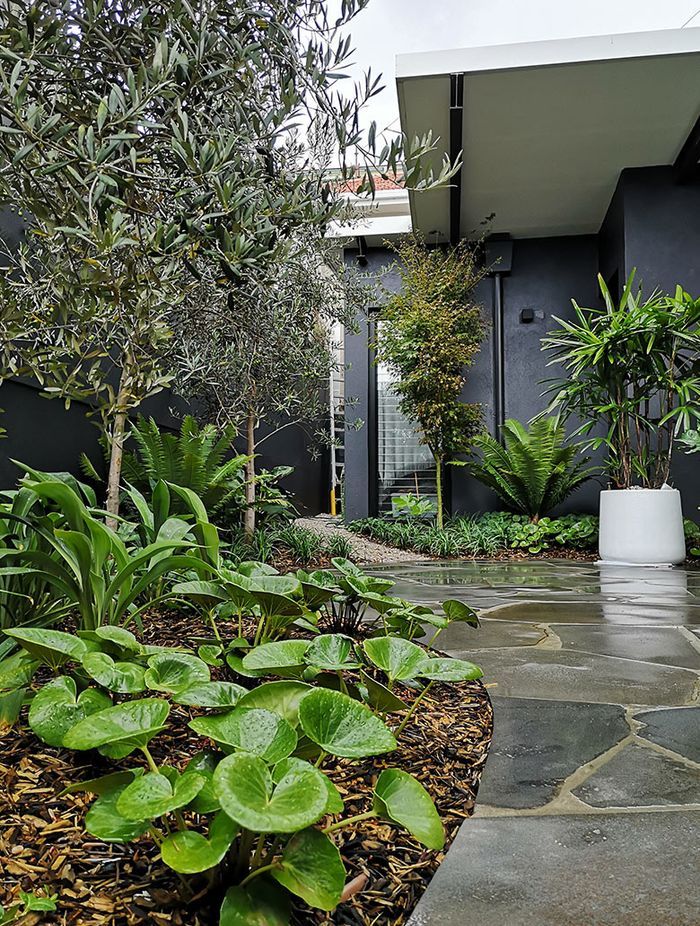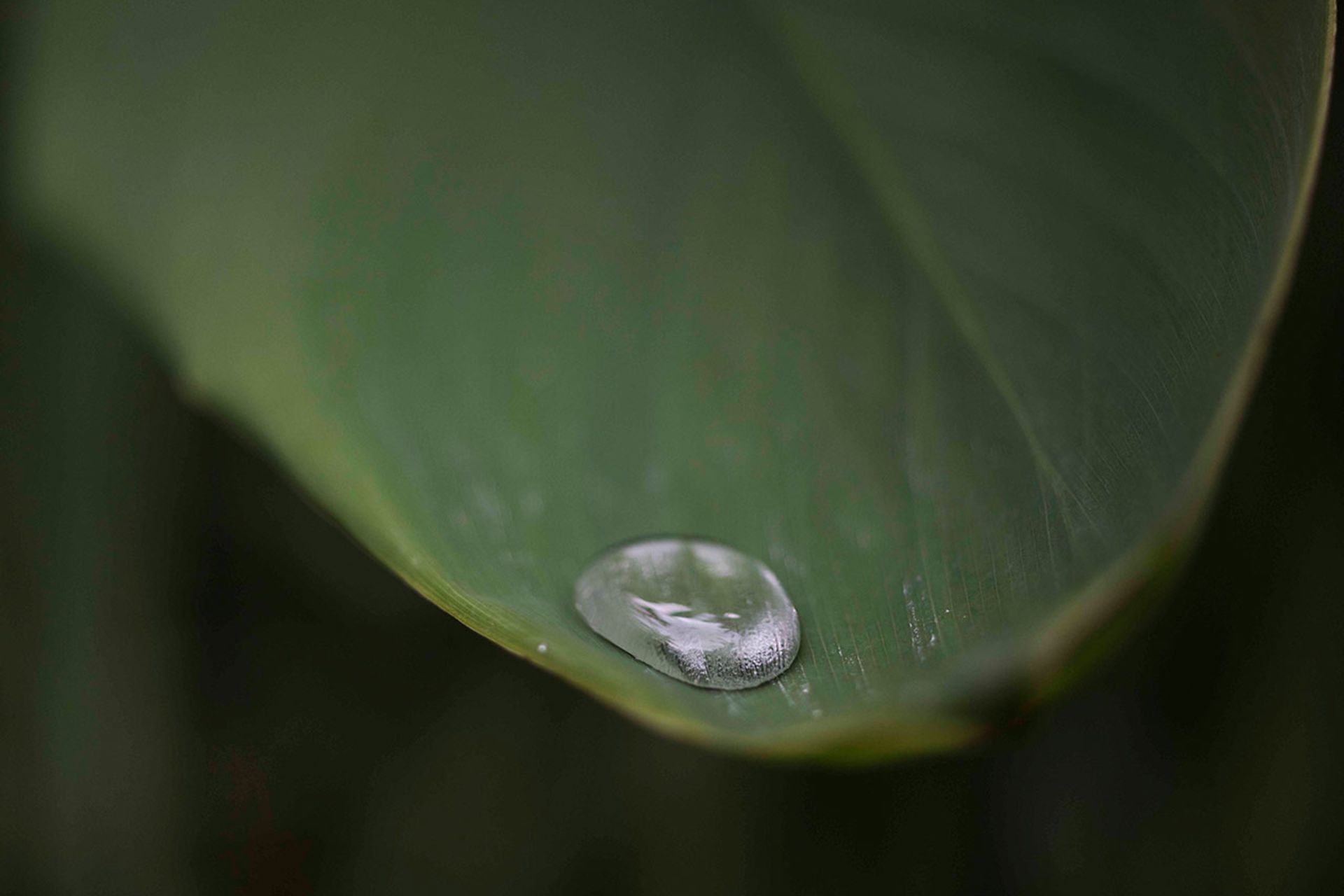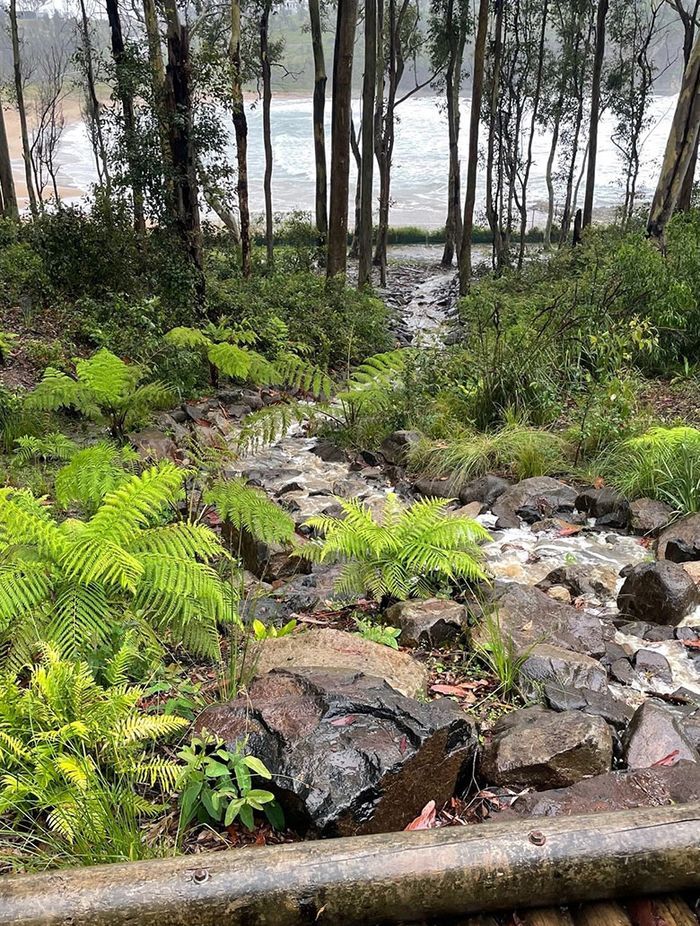Wet, Wet, Wet: How to manage soaked Sydney gardens during La Nina’s rainy season

Whether you live by the coast where rain and surf conditions have been volatile, or further inland, it’s been hard to avoid the unrelenting showers and grey skies that have dominated in recent weeks.
In fact, Sydney has recorded its highest ever rainfall to April this year, thanks to the effects of climate change and the weather pattern known as La Niña. While El Niño is associated with dry conditions, during La Niña temperatures are typically slightly warmer and rainfalls higher, with weather events like the repeated flooding in the Northern Rivers region more likely.
Although Sydneysiders have largely been spared the devastation of flooded homes and businesses, the constant wet has caused a multitude of problems for homeowners, from swelling timbers to potentially dangerous mould.
Managing heavier rainfalls has presented its own challenges for garden design as well, while weeks of heavy rain have resulted in muddy, waterlogged grounds and, in some cases, rotting plants, says Henry, Secret Gardens Landscape Designer.
“We are finding that cactus and succulents are starting to suffer,” he says. “They like water but they need gaps between the rain so that the soil can dry out. Right now, they are not having that relief because the ground is staying wet and they are starting to rot.”
Some materials such as sandstone pavers, timber and ceramic tiles have not fared well either. Sandstone can grow moss or mould when exposed to water over an extended period, while ceramic tiles can become treacherously slippery. Too much rain can also pose problems for structures like timber gates and doors, which can swell during wet weather.

Right now, though, some plants wilting or turning yellow from too much water. Henry says it’s important not to rush in and replace plants that are not thriving.
“Be patient,” he says. “Wait for spring where plants should kick back and put on new growth. Most won’t be doing anything right now.”
Take a walk around the garden to check on drainage and under decks for potential problems with ventilation, which can create damp.
Many irrigation systems have rain sensors which shut them off during wet weather but check to see if they are working properly or turn them off altogether. Where water is still evident even after the rain has stopped, check that drainage systems are working efficiently.
Beyond the short term health of your plants, take time to assess the long term gains of creating covered areas that can still provide a connection to the garden without the risk of getting wet. Quick-dry, easy-care outdoor furniture is also a bonus to make the most of the sunshine. It’s about providing adaptable environments that can respond to changing conditions with the greatest ease.
To give your garden the best chance of drying out between showers, try to draw as much sunshine into the garden as you can. There are a few tasks associated with winter gardening that will help.

“I will be pruning my hedge a little earlier this year to let the sun in to help the garden dry out,” Henry says. “You can also ensure you are getting as much winter sun on your garden as possible by trimming plants and trees that are currently stopping the light reaching your outdoor space.”
This is especially important for some plants that might be enjoying the heavy rainfall more than others.
“Some plants will put on more growth and some plants appreciate the extra water but that’s not the case with all of them,” Henry says. “We’re replacing plants that are rotting as well as dealing with extra growth that has come in, both because of the rain.”

With the Bureau of Meteorology predicting above average rainfalls for the east coast from July through to September 2022, it seems we may have to prepare for more wet weather. It’s a reminder to enjoy the breaks and sunny winter skies when you can.
• Recent wet weather has played havoc with landscaping construction and maintenance. Be patient with your contractor who is juggling scheduling issues.
• Don’t rush in to remove plants that are not thriving. Plants are often dormant over winter and may well bounce back with new growth in spring.
• Discuss with your designer how well your choice of hard materials, like tiles and timber, will wear during extended wet periods. It may be worth considering other options if they will perform better for longer.
• Consider how you want to use your garden all year round, rain, hail or shine. A well-designed covered terrace or pavilion will allow you to continue to enjoy your garden, even in bad weather.
